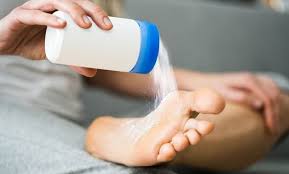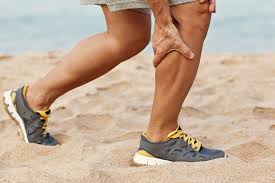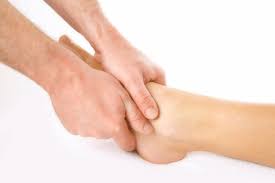
Effective Leg Cramps Relief: Tips and Solutions
Nutrition Tips for Providing Leg Cramps: Key Vitamins and Minerals
Leg cramps can strike anyone, anytime, causing sudden discomfort and disruption. Understanding their causes and effective remedies is essential for managing this common issue. Whether you’re an athlete or a couch potato, leg cramps can affect us all. Let’s delve into the world of leg cramps to uncover their mysteries and find relief.

Leg cramps are a common, yet often misunderstood, phenomenon that can range from a minor annoyance to a debilitating issue. Whether you’re an athlete, a sedentary individual, or someone in between, chances are you’ve experienced the sudden, involuntary tightening of muscles in your legs at some point in your life.
Overview of Leg Cramps
Leg cramps, also known as muscle spasms or charley horses, are sudden, involuntary contractions of one or more muscles in the leg. These contractions can cause intense pain and discomfort, often striking during periods of rest or sleep. While leg cramps can affect individuals of any age, they are particularly common in older adults and pregnant women.
Symptoms of leg cramps may include:

- Sudden, intense pain in the leg muscles
- Involuntary muscle contractions or spasms
- Tightness or stiffness in the affected muscles
- Visible or palpable knots or lumps in the muscle
- Difficulty moving or stretching the leg
- Pain that worsens with movement or pressure on the affected area
- Discomfort or tenderness in the leg after the cramp subsides
- Potential lingering soreness or weakness in the leg following the cramp
Causes of Cramps:
Understanding the underlying causes of leg cramps is essential for effective prevention and management. Several factors contribute to the occurrence of this issue, including:
- Dehydration: Insufficient hydration can lead to electrolyte imbalances, affecting muscle function and increasing the likelihood of cramping.
- Muscle Fatigue: Overuse or fatigue of muscles, especially during exercise or physical activity, can trigger cramps.
- Nutritional Deficiencies: Inadequate intake of essential minerals such as potassium, magnesium, and calcium may predispose individuals to muscle cramps.
- Poor Circulation: Conditions that impair blood flow to the legs, such as peripheral artery disease or sitting for prolonged periods, can contribute to cramping.
- Nerve Compression or irritation, often due to conditions like spinal stenosis or herniated discs, may cause muscle spasms in the legs.
- Certain medications, including diuretics, statins, and asthma medications, list muscle cramps as a potential side effect.
Prevention Strategies:
While cramping can be challenging to predict, adopting preventive measures can help reduce their frequency and severity:
- Drink an adequate amount of water throughout the day to maintain electrolyte balance and prevent dehydration.
- Incorporate gentle stretching exercises into your daily routine, focusing on the muscles prone to cramping.
- Consume a balanced diet rich in potassium, magnesium, calcium, and other essential nutrients to support muscle health.
- Warm up properly before physical activity and avoid sudden increases in intensity or duration to prevent muscle fatigue.
- Take breaks from prolonged sitting or standing, and engage in activities that promote blood flow, such as walking or cycling.
- Review Medications: Consult your healthcare provider if you suspect that medications may be contributing to your leg cramps and explore alternative options if necessary.
Remedies:

Despite preventive efforts, cramps may still occur. When they strike, try the following remedies to alleviate discomfort:
- Gently stretch the affected muscle by flexing your foot upward (for calf cramps) or massaging the cramped area.
- Apply a warm compress or take a warm bath to relax tense muscles or use a cold pack to numb the area and reduce inflammation.
- Drink water or consume electrolyte-rich fluids like sports drinks to replenish lost fluids and minerals.
- Massage the cramped muscle using firm, but gentle pressure, focusing on releasing tension and improving circulation.
- Over-the-counter pain relievers such as ibuprofen or acetaminophen may help alleviate discomfort associated with leg cramps.
Let’s debunk some of the prevalent myths:
Myth 1: Leg Cramps Only Happen to Athletes
Reality: While athletes may be more prone to cramps due to intense physical activity and muscle fatigue, this can affect individuals of all ages and activity levels. Factors such as dehydration, poor nutrition, and certain medical conditions can contribute to leg cramps in anyone, regardless of their athletic prowess.
Myth 2: Stretching Before Exercise Prevents Leg Cramps
Reality: While stretching before exercise is essential for flexibility and injury prevention, there’s limited evidence to suggest that it directly prevents cramps. However, incorporating regular stretching into your routine can help improve overall muscle health and reduce the risk of cramps by maintaining flexibility and mobility.
Myth 3: Leg Cramps are Always Caused by Dehydration
Reality: Dehydration is a common trigger for this condition, as electrolyte imbalances can affect muscle function. However, it can also result from other factors such as muscle fatigue, poor circulation, nerve compression, and nutritional deficiencies. It’s essential to address all potential contributors to effectively prevent and manage cramps.
Myth 4: Drinking Water Alone Can Prevent Leg Cramps
Reality: While staying hydrated is crucial for preventing dehydration-related leg cramps, simply drinking water may not be sufficient. Electrolytes, such as potassium, magnesium, and calcium, play a significant role in muscle function, and inadequate intake of these minerals can contribute to cramping. Consuming electrolyte-rich fluids or foods, such as sports drinks or bananas, can help replenish lost minerals and reduce the risk of the condition.
Myth 5: Cramps Only Happen at Night Reality:
While nocturnal cramps are common and often more noticeable due to sleep disturbances, they can occur at any time of the day. Factors such as physical activity, dehydration, and muscle fatigue can trigger cramps during waking hours as well.
Myth 6: Massaging a Cramp Can Make It Worse
Reality: Gentle massage of the cramped muscle can actually help alleviate discomfort by promoting relaxation and improving circulation. Massaging the affected area with firm, but gentle pressure can help release tension and ease muscle cramps. However, it’s important not to apply excessive force or vigorous massage techniques, as this may exacerbate the cramp or cause injury.
Myth 7: Applying baby powder to the area can help relieve leg cramps
Reality: Applying baby powder to the affected area is unlikely to relieve cramps. Baby powder is typically used to absorb moisture and reduce friction on the skin, rather than addressing the underlying causes of muscle cramps. While gentle massage and stretching exercises may help alleviate discomfort, it’s essential to explore other remedies such as hydration, proper nutrition, and targeted stretching to effectively manage cramps. Consulting with a healthcare professional for personalized advice is recommended for persistent or severe leg cramps.
Leg cramps can be a source of significant discomfort and frustration, but understanding their causes and implementing preventive strategies can help minimize their impact on daily life. By staying hydrated, maintaining proper nutrition, and incorporating stretching exercises into your routine, you can reduce the frequency and severity of cramps. Additionally, knowing how to effectively manage the symptoms when they occur, through stretching, hydration, and other remedies, can provide much-needed relief. If this condition persists or significantly interfere with your quality of life, consult a healthcare professional for further evaluation and personalized treatment recommendations. Remember, with proper care and attention, you can take steps to alleviate leg cramps and enhance your overall well-being.
Disclaimer: The information provided in this content is for general informational purposes only. It is not intended as medical or healthcare advice, diagnosis, or treatment. Always seek the advice of a qualified healthcare professional with any questions you may have regarding a medical condition or healthcare decisions.

